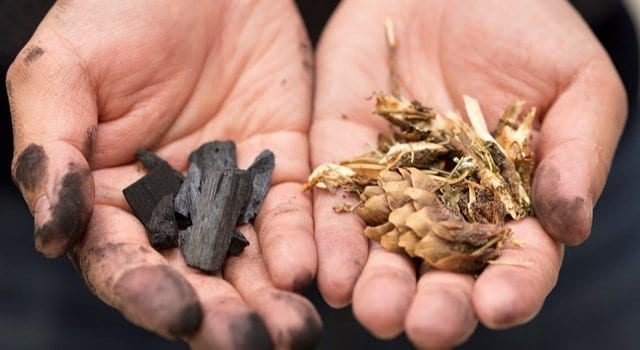
When the forestry machines have finished extracting timber, what is left are tops and branches – waste which cannot be used. However, according to researchers, it is possible to turn these heaps of lopwood into high-quality charcoal.
Branches, tops, lopwood and brushwood that are left in felled areas after the timber has been extracted are now set to become more than just an irritation to hikers and berry-pickers. The aim is to turn these heaps of lopwood into the purest possible biocarbon. That’s charcoal, to you and me.
So the raw material, known in the trade as brash, is now being put under the microscope.
SINTEF Senior Researcher Øyvind Skreiberg isn’t holding back. “This could revolutionise Norwegian bio-energy production”, he says.
Read more . . .
The Latest on: Bioenergy
[google_news title=”” keyword=”Bioenergy” num_posts=”10″ blurb_length=”0″ show_thumb=”left”]
via Google News
The Latest on: Bioenergy
- Bioenergy Devco Named 2024 Seal Business Sustainability Awards Winneron May 9, 2024 at 6:23 am
Bioenergy Devco, a global leader in the design, engineering, construction, financing, and operation of advanced anaerobic digester systems, has been named as a winner of the 2024 SEAL Business ...
- What’s the best way to deal with hard-to-recycle plastics?on May 8, 2024 at 10:01 pm
Around 26 million tonnes of plastic scrap is generated in Europe every year. While traditional recycling efforts play a crucial role, not all of this ...
- Bioenergy Devco honored at SEAL Awardson May 8, 2024 at 12:52 pm
The company received the Environmental Initiatives Award for its organics recycling facility in Jessup, Maryland.
- Bioenergy in Europe - statistics & factson May 7, 2024 at 5:00 pm
The bioenergy sector is also able to harnesses waste products to generate energy; including landfill gas, solid municipal waste, and sewage sludge. In the context of the European Union (EU ...
- Kalfresh Vegetables to establish $291m bioenergy plant in Scenic Rim after green light from state govon May 7, 2024 at 2:15 pm
One of Queensland’s biggest vegetable growers has been given the State Government green light for a $291m project that will turn food waste into power, gas and biofertilizer.
- Idaho saw fewer business deals, but beat the nation. Bioenergy, mining, tech companies strike dealson May 2, 2024 at 9:05 am
The annual look at the number and value of business transactions for 2023 is out. The 2023 Idaho Deal Flow report shows a softening in the value of transactions but continued strong numbers when it ...
- What Is Bioenergy And Can It Be A Good Enough Energy Source? Robotics & Automation Newson May 1, 2024 at 9:14 pm
The entire world is on the lookout for some alternative energy sources, and what often stands out as one of the possible solutions is bioenergy. If y ...
- Is bioenergy ever truly green? It depends on five key questionson May 1, 2024 at 7:27 am
Plans to revive an old coal-fired power station using bioenergy are being considered in the Hunter region of New South Wales. Similar plans for the station have previously not gone ahead. As we ...
- Bioenergy industry in France - statistics & factson April 11, 2024 at 5:00 pm
The term “bioenergy” includes all types of energy produced from organic materials: agricultural production, organic waste or wood. The world’s bioenergy capacity has been constantly ...
- What’s So Green About Burning Trees? The False Promise of Biomass Energyon March 28, 2024 at 5:00 pm
And because wind and sunlight are inherently free, there are no ongoing feedstock costs. Bioenergy, otherwise known as biomass energy, is, however, different. This kind of power involves using ...
via Bing News










